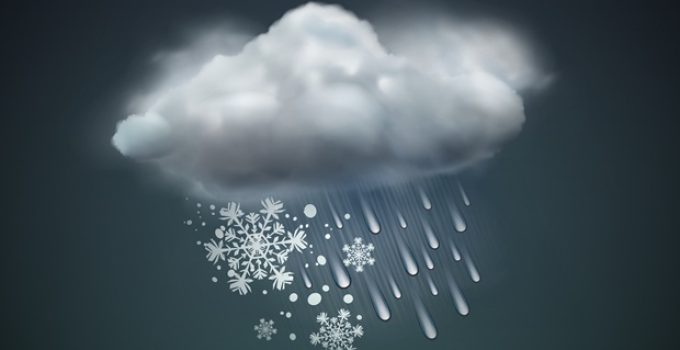Why Does It Snow Instead of Rain?
Answer at a Glance: It snows instead of raining when the temperature in the clouds and all the way to the ground is cold enough for ice crystals to form and stay frozen. Snow forms in clouds where water vapor freezes into ice. If it stays below 32°F (0°C) all the way down, those ice crystals fall as snowflakes. If it warms up on the way down, the snow melts into rain.
🔍 Dive Deeper
- How Snow Forms in the Atmosphere
- When Does Rain Turn to Snow?
- Temperature Layers Matter
- Other Types of Winter Precipitation
- 🎯 Final Thoughts
- 📚 References
How Snow Forms in the Atmosphere
Snow begins its journey high up in cold clouds, where the temperature is well below freezing. Here’s what happens:
- Water vapor (a gas) in the cloud sticks to dust or pollen particles.
- It freezes right away, forming an ice crystal.
- More water vapor sticks to it, and it grows into a snowflake.
🔬 Fun Fact: Every snowflake is unique because temperature and humidity affect how they grow!
These snowflakes fall toward the ground. Whether they stay as snow or turn into rain depends on the air temperatures below the cloud.
When Does Rain Turn to Snow?
To get snow, the air must be below freezing (32°F or 0°C) from the cloud all the way down to the ground. If the snowflake passes through a warm layer on its way down, it might melt and become rain or sleet.
🌡️ Key Fact: According to the National Weather Service, snow often forms in clouds where the temperature is between 0°F and 14°F (-18°C to -10°C) [1].
| Air Temperature Below the Cloud | What You Get |
|---|---|
| All below 32°F (0°C) | ❄️ Snow |
| Middle layer above 32°F | 🌧️ Rain |
| Warm layer + cold ground | 🌨️ Freezing rain/sleet |
Temperature Layers Matter
The temperature of the entire atmosphere column (from cloud to ground) decides the kind of precipitation:
- If it’s all below freezing, snowflakes stay frozen → Snow
- If there’s a thin warm layer, snow melts → Rain
- If there’s a warm layer above freezing and a cold layer near the ground, melted snow can refreeze → Sleet
- If the snow melts and stays liquid but hits a freezing surface, it freezes on contact → Freezing Rain
This is why it can snow one day and rain the next—even if it still feels cold outside!
Other Types of Winter Precipitation
Not all winter precipitation is snow. Here’s how the others compare:
| Type | How It Forms | Feels Like |
|---|---|---|
| Snow | Frozen in cloud and stays frozen | Soft, fluffy flakes |
| Sleet | Snow melts, then refreezes into ice pellets | Hard little ice balls |
| Freezing Rain | Snow melts fully, hits a freezing surface, and refreezes | Icy glaze on everything |
| Graupel | Snowflakes coated in freezing rain droplets | Soft, squishy pellets |
🌨️ In winter weather forecasts, meteorologists look closely at temperature profiles from the ground to the sky to predict what will fall.
🎯 Final Thoughts
So, why does it snow instead of rain? Snow happens when it’s cold enough for water vapor to freeze into ice crystals in the clouds—and those crystals stay frozen all the way to the ground. If temperatures warm up on the way down, that snow can melt into rain, sleet, or freezing rain. It’s not just about the temperature at the ground—it’s the layers of air above you that really matter!
So next time it’s snowing instead of raining, you’ll know it’s because the whole sky has stayed cold enough to keep winter’s magic frozen.
📚 References
- National Weather Service. “How Snow Forms.”
https://www.weather.gov/jetstream/snow - NOAA National Severe Storms Laboratory. “Types of Winter Precipitation.”
https://www.nssl.noaa.gov/education/svrwx101/winter/types/ - UCAR Center for Science Education. “What Causes Snow?”
https://scied.ucar.edu/learning-zone/how-weather-works/what-causes-snow - NASA Climate Kids. “What Is Precipitation?”
https://climatekids.nasa.gov/precipitation/ - Weather Underground. “Why It Snows.”
https://www.wunderground.com/cat6/why-it-snows
📌 Learn More About Weather
- How Do Supercell Thunderstorms Form?
- Why Is It Hotter in Summer and Colder in Winter?
- Why Does It Snow Instead of Rain?
- Why Is the Sky Blue During the Day?
- What’s a Microclimate?
